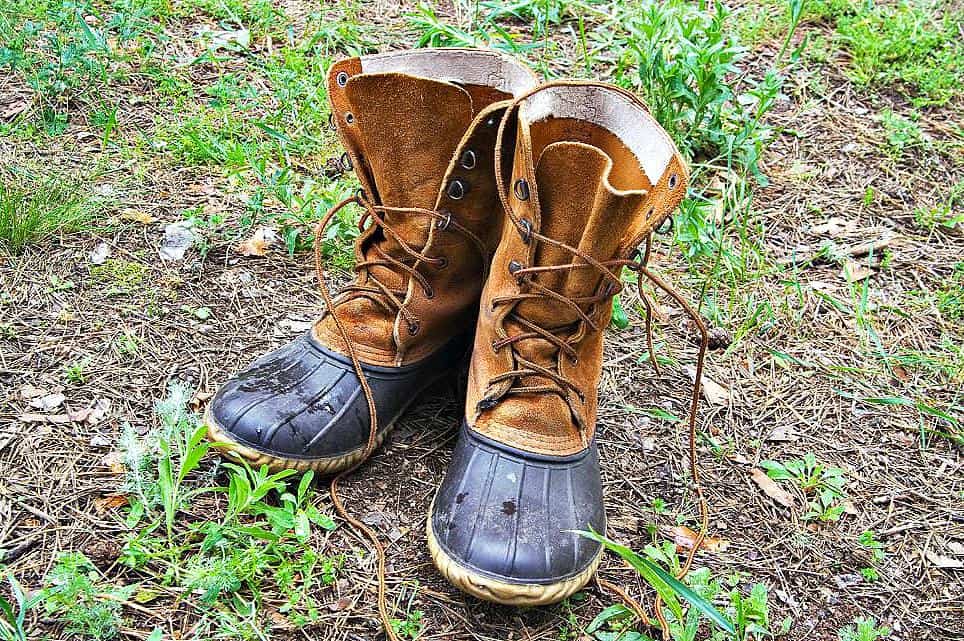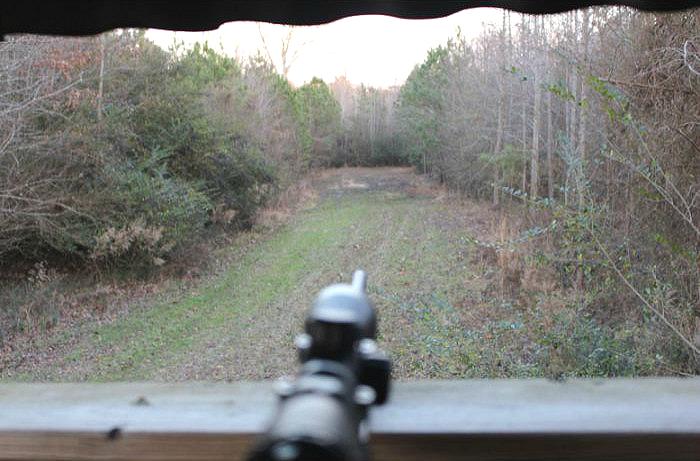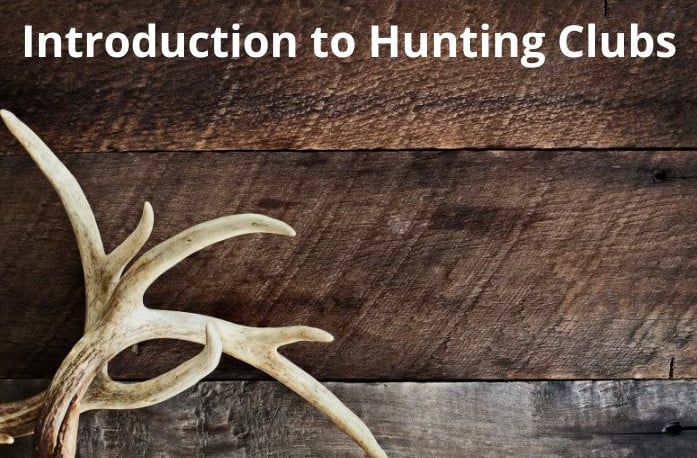Are you looking to take your wing shooting game to the next level? Pre-season clay target shooting is a great way to hone your skills and increase proficiency. You can improve accuracy and build confidence before heading out into the field with just a few practice sessions. In this post, I’ll explore how pre-season clay target shooting can elevate your wing shooting game and keep you in top form for the upcoming season.
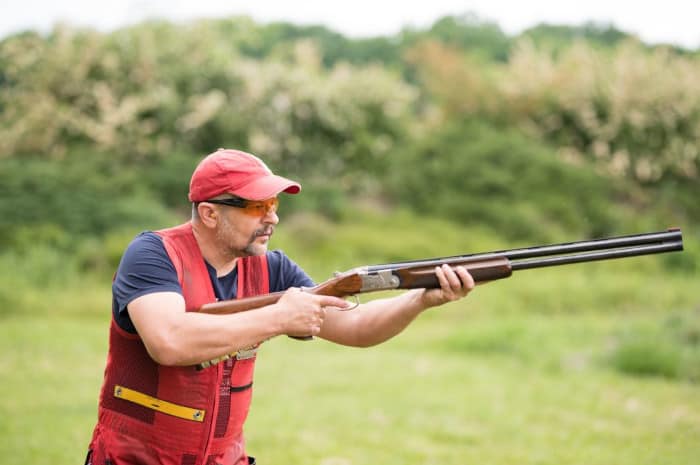
Pre-season clay target shooting provides an opportunity to get familiar with different types of shotgun shells, including lead shot size and velocity levels that match what you’ll use when hunting. It also allows you to practice various angles at which birds may come in so that you’re prepared when it counts.
In addition, you’ll be able to work on tracking targets more accurately while improving swing technique and learning proper gun mount and follow-through. All these elements combined will help refine your skillset and give you greater control over where each shot goes.
Finally, pre-season clay target shooting helps boost focus and mental discipline during actual hunts because it increases comfortability behind the trigger. This heightened comfort comes from having confidence in yourself thanks to regular practice with different loads, angles, speeds, etc., which ultimately leads to improved success rates when hunting live birds.
Benefits Of Pre-Season Wing Shooting Practice With Clay Targets
Like riding a bike, wing shooting isn’t one of those skills that you forget. However, it is a perishable skill that becomes less effective without use. With wing shooting, several components play a role in successfully hitting the moving target. Those components include:
- Muscle memory
- Timing
- Reaction time
- Target tracking
All those components come together to help knock down targets, but those components also become rusty without use.
Here’s where clay targets come into play, as they can be used to knock the rust off those mini-skills and get yourself ready for the upcoming season.
Shooting skeet, trap, or 5-stands provides an enjoyable way to fine-tune our aim while having fun. Not only do you get the chance to work on the different facets of your shotgunning, but it also gives shooters a chance to test out new shotguns, new loads, and new shotgun/ammunition combinations. With each round completed, there will be tangible improvements as we strive towards peak performance come opening day.
Now let’s explore sporting clays…
Sporting Clays
Introduced to the U.S. around 1980, sporting clays have quickly become the most popular type of clay target shooting discipline. Designed as the ideal blend of trap, skeet, and live-bird hunting, sporting clays replicate the flight patterns of wild game birds and some mammals (primarily a rabbit).
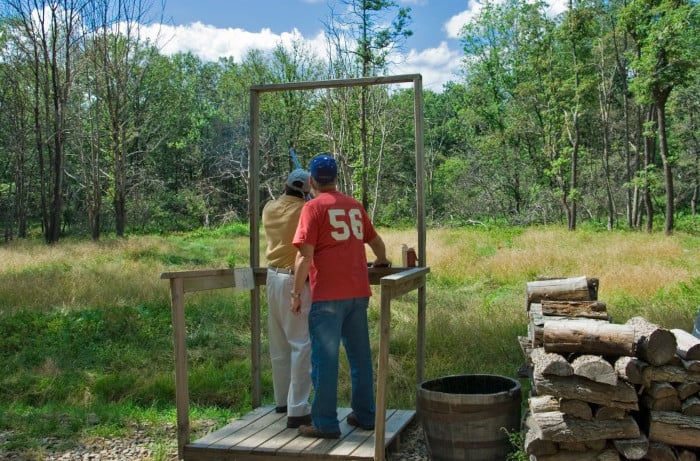
Sporting clays requires shooters to hit multiple targets from different stations set in natural surroundings. In the world of sporting clays, no two courses are created equal, and a typical round can involve shooting between 50 and 100 targets.
A good course will be a mile or longer and traverse both wooded and open areas, with 10 to 15 stations designed to replicate the types of shots encountered in the wild. Typically, each station has a name or label that provides some hints about the kind of target to expect.
The target simulations are designed to duplicate the following types of upland hunting:
- Rabbits
- Doves
- Quail
- Pheasant
- Chuckar/Grouse
- Ducks
The clay pigeons used in sporting clays come in a variety of different shapes and sizes, from the standard trap and skeet target to a mini-target and a specialized model called a rabbit. Like its name, the rabbit clay disk is designed to be deployed on the ground and is more durable to survive bouncing along the ground. Clay targets can be thrown as singles, as true pairs, or as report pairs, with a second bird launching as soon as the first is shot at.
The different stations found in sporting clays allow hunters to practice shooting at both fast-moving and slow-moving targets while using their chosen shotgun, gauges, and chokes. Clays also provide more realistic target presentations than traditional trap or skeet because they’re thrown with varying speeds, angles, elevations, distances, trajectories, and sizes.
In addition, the ability to adjust your lead on various clay targets helps you develop better instincts when it comes time for that first hunt of the year. And because sporting clays are taken from various positions—such as low gunning, high gunning, crossing shots, and other challenging angles—this form of pre-season training will help sharpen your skills immensely.
Here’s a quick story of my first try at sporting clays, but first, a little background to set the story: I grew up hunting small game and had started hunting birds at a young age. I had quite a bit of experience shooting doves, quail, and the occasional grouse. As such, I considered myself a better-than-average shotgunner. Not great, mind you, but better than average.
When I went to shoot my first sporting clays round with a few friends, I expected that I would do OK but not be embarrassed either. Yeah, ….well, I was sadly mistaken, as I shot absolutely terrible and finished with the lowest score in my group. So, I decided to shoot another round and, actually, did worse.
I started doing more sporting clays in the off-season and eventually booked some time with a professional shotgun instructor (which I’ll discuss more below), and I saw some noticeable improvement. Another thing I noticed, my wing shooting performances in the field started improving. My dove hunting hits-to-shots ratio started improving, and I started shooting better on quail as well. My duck hunting success only increased marginally, but I only hunt ducks a few times a year.
Skeet
Now that we’ve discussed the exciting, fast-paced world of sporting clays, it’s time to move on to skeet. This classic shooting game has been around since the 1920s and still is one of the most popular ways for hunters and shooters to hone their wing shooting skills.
Skeet utilizes two trap houses located at opposite ends of a semicircle with eight shooting stations situated in between. A set number of clay targets are launched from each station with varying speeds and angles depending on which station you’re shooting from. It can be an excellent way to practice targeting flying birds and develop your ability to transition quickly between shots while maintaining accuracy.
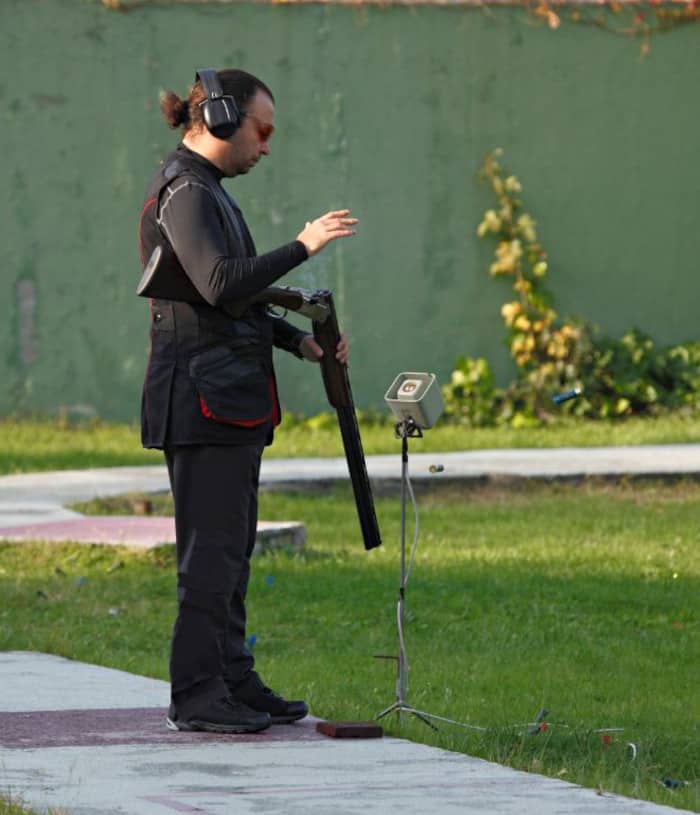
One massive benefit of skeet over other shotgun sports, such as trap or even sporting clays, is its accessibility; all you need is some land or open space, a couple of clays launchers, and some ammo – making it much easier than having to find access to a range or course.
Furthermore, if you have someone willing to act as a ‘puller’ (the person who launches the targets), then two people can shoot without needing any additional equipment.
Skeet is an ideal warm-up to bird hunting, especially with species that commonly involve multiple targets and passing shots. Skeet is a beneficial practice for bird species such as:
- Ducks
- Doves
Trap Shooting
Trap shooting is another wing-shooting activity that can help prepare a shotgunner for specific types of bird hunting situations. The fast-paced nature of trap shooting can be compared to that of sporting clays, with its quick target presentation and focus on accuracy. It’s excellent practice for learning how to lead targets accurately and hit them consistently in the air. Additionally, it provides a more realistic approach – since the clay discs are released from a single area at random angles, you never know exactly where they’ll go or when they’ll appear.
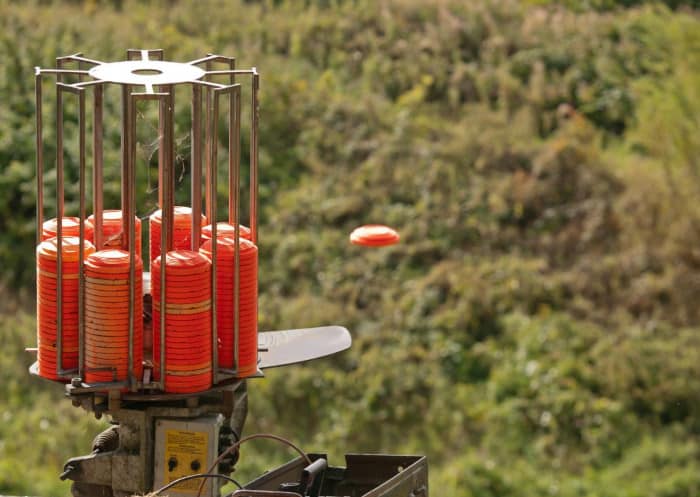
Since most of the clay targets in trap shooting are moving away from the shooter, trap shooting is best suited for hunters who pursue the following species:
- Quail
- Pheasant
- Woodcock
- Grouse
Trap shooting is ideal as both a pre-season warm-up or as a method to work on your shooting skills for a quail covey rise. However, if you really want to add a touch of realism to your trapshooting, try these modifications:
- If possible, don’t call for a clay target or targets to be launched. Instead, keep the shotgun in the low ready and let the launcher decide when and how many clays will be sent. This approach is more in line with several real-world bird hunting scenarios and offers a more realistic hunting scenario.
- If possible, instead of having more than one clay launched together, do a multiple clay launch where the second clay launches when you fire the first shot at the first clay. This scenario is commonly called a “Report Pair” and is more in line with natural birding hunting, where a second target flushes when the first shot is fired.
I Don’t Need a Shooting Instructor, Or Do I?
Most experienced shotgunners who are struggling or want to work on shooting improvements will initially try to make those improvements themselves. However, very few experienced shooters want to admit that they could use some professional help, so very few will go down that path.
I should know, as I was that shooter. I was an experienced shotgunner who was going to “shoot out” of my shooting slump or was going to make my own adjustments at the sporting clays range to fix my problems.
However, one day I was shooting a round of sporting clays with a random group that included a new shooter working with the club professional through the round. As I listened and watched him help this new shooter, I liked his approach and the points he made. So, I ended up booking some time with him.
Here’s the thing about working with a shooting coach: they will see something you’re doing that you can’t possibly see. For example, right away, my instructor noticed that I was lifting my head off the stock when I pulled the trigger, which caused a problem with my follow-through. Because I wore glasses as a kid, I’d always done this to verify that I’d hit the bird. Even though I wear contacts now, the habit has followed me through adulthood. And, boy, did that take some intense focus to overcome because it was ingrained as a habit.
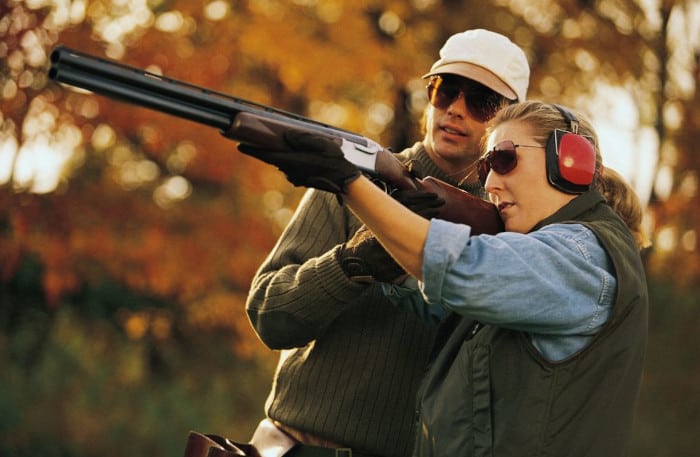
He also noticed that I was trying to estimate a lead versus swinging through the target to establish a lead. After a few drills and some live firing, I noticed some significant improvement. I ended up booking another session with him, and my sporting clay scores still thank him.
My advice would be this: No matter your skill or shooting experience level, don’t be afraid to spend some time with a professional instructor. In my case, It was well worth the month and time, and I really wish I had done it sooner.
Improving Your Shotgun Skills
Before answering this question, let me repeat that I am by no means a wing shooting instructor, but here are some tips that have significantly helped me improve my shotgunning skills:
Pre-season Clay Targets Do Nothing But Help
I’ve got hunting friends who, for some of the most ridiculous reasons, refuse to take me up on my invitations to hit the skeet or trap range before bird season hits, and then can’t understand how or why they struggled with poor shooting on opening day.
Now, let me be clear, shooting a few rounds of sporting clays before the season starts isn’t going to guarantee a 100% hit ratio or turn you into one of those trick-shooting shotgunners. However, you won’t be in a situation where you haven’t fired a shotgun in 12 months, either. I firmly believe that all the shooting disciplines are a perishable skill in that your skill level degrades without practice.
And I can’t honestly say that a few rounds of pre-season sporting clays ever made me shoot worse.
Practice in Hunting Clothes
It took me forever to figure this one out as I always started shooting clays in warm weather wearing a T-shirt, which was noticeably different from shooting at ducks wearing insulated waders and a heavily insulated coat in 20-degree weather.
If the conditions allow it, try to shoot some practice rounds in similar clothing to what you hunt in. Now, obviously, it won’t make sense to shoot skeet in August wearing insulated duck waders because you’ll likely pass out from heat stroke before the skeet round finishes. But, again, the operative phrase is “if conditions allow it.”
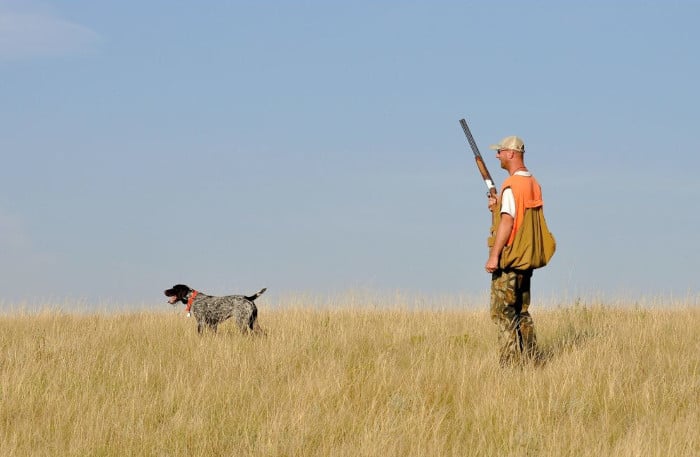
Try to Replicate The Hunting Scenario (where possible)
When you do any pre-hunting season practice, try to make the practice sessions as close to hunting the real thing as possible. This is one area where sporting clays can be helpful as it offers realistic type shooting for almost every imaginable kind of wing shooting.
But other small details matter too. For example, I use a different shotgun choke when hunting doves versus hunting quail. When shooting skeet to prep for dove season, I practice with my shotgun plugged to three (per migratory game birds law), and use my preferred choke for dove hunting.
However, when I start shooting trap for quail season, I move to a more open choke and remove the shotgun plug, so the shooting scenarios are as close to the real thing as possible.
Frequently Asked Questions
Here are some commonly asked questions that I see dealing with wing shooting:
What is the definition of wing shooting?
Wing shooting is a type of recreational shooting sport where participants attempt to shoot flying targets. Targets typically include birds such as ducks, geese, pheasants, and pigeons, but can also include clay discs and other moving objects. Wing shooting is usually conducted with shotguns and requires a combination of marksmanship, physical fitness, and knowledge of game birds and their behavior. It is a popular activity for hunters, recreational shooters, and competitive shooters alike.
How often should I practice pre-season wing shooting?
The frequency of your practices depends on several factors, including your current skill level, desired outcome, and available schedule. Given all the potential variables involved in answering that question, there is no hard and fast answer.
In my case, I prefer to shoot sporting clays throughout the off-season (when my schedule allows) in an effort to avoid “becoming rusty.” However, as quail season begins to draw near, I’ll transition away from sporting clays and start shooting a few rounds of trap to prepare for quail season specifically.
Does my shotgun have to be plugged while shooting skeet?
Most skeet ranges have fairly basic rules about shotguns, and only require that a shotgun fire at least two consecutive rounds. Since only one round can be fired at each clay target, and the maximum number of shells a shooter can load at one station is two, there really isn’t an advantage to having a repeating shotgun that is not equipped with a plug. A shotgun without a magazine plug does not offer any type of advantage in skeet.
Conclusion
If you’re serious about getting ready for the upcoming bird hunting season, pre-season clay target shooting can be the difference between an opening day with decent shooting and an opening day with great shooting. With some early practice, you’ll be better prepared mentally and more confident in your ability to bag game birds this season.
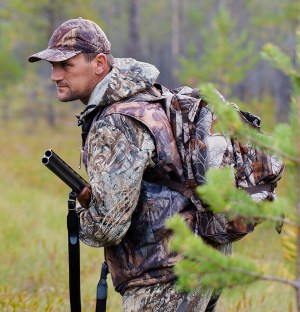
Born and raised in the North Carolina foothills, Andy was introduced to the outdoors at a very young age. Like most beginning hunters, he started out hunting small game like rabbits and squirrels, then graduated to larger species like Whitetail Deer. Although he’s an avid deer and turkey hunter, he still enjoys hunting small game as well. Andy has worked in the hunting and fishing industry for nearly 25 years.



